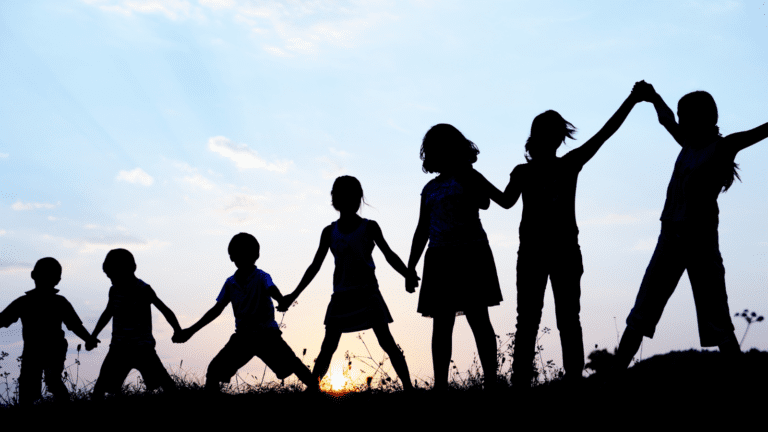Children have a basic understanding of poverty – a more equal society means talking to them about it

Patrick Leman, University of Waikato
Rates of child poverty in Aotearoa New Zealand remain stubbornly high, despite the issue being the focus of considerable political attention while Jacinda Ardern was prime minister.
In 2022, 120,000 children in New Zealand were being raised in households experiencing material hardship. This means their family is unable to afford essential items such as food, clothing, accommodation, heating and transport.
Alongside the obvious and pernicious direct effects of poverty on a person’s health and life prospects, there is a broader issue of what rising economic inequality may mean for all of us in the long run.
As we look at the consequences of poverty, we also need to ask what children themselves – the “kids who have” and the “kids who have not” – understand about the unequal world around them.
Stages of understanding
Statistics about childhood poverty tell part of the story of the widening gap in income and wealth. But children’s perceptions and understanding of economic inequality, and their experiences of it, will shape how future generations deal with the social upheaval it may bring.
So how do our children learn about, or perhaps learn to tolerate, inequality? Just for a moment, let’s set aside political or moral positions. For children growing up in poverty there are undeniable negative consequences on their physical and mental health, and their education.
Over the course of a person’s life, this disadvantage restricts opportunity. Rising levels of poverty risk creating a cycle of inequality that continues into the future as those raised in poverty become adults.
Research indicates a consistent developmental pattern in how children acquire an understanding of economic inequality.
Before five years of age, children grasp only very basic distinctions between rich and poor. Older children can link wealth to work, albeit in a linear way: that is, they believe working hard leads to wealth.
And at around ten years, children start to consider effort, education, inheritance and occupation as factors affecting wealth.
Children understand fairness
Through most of childhood, wealth and poverty is framed in terms of basic stereotypes attributed to individuals. While these explanations can persist into adulthood, adolescents increasingly consider inequality more in terms of its structural, political and economic causes.
Children may not grasp the social and structural features that relate to economic inequality. But as any parent can tell you, you’ll find out pretty quickly if a child thinks something isn’t fair.
Of course, questions of inequality are intimately bound up with questions of morality. So while there is arguably limited reward in a conversation with your three-year-old about the finer points of macroeconomic theory, instilling a straightforward ethic of fairness and the principle of equality (or equity) from a young age is worthwhile.
The broader social and political context matters too. Public discussions on individualistic versus structural explanations for inequality, and the prevailing political milieu, provide important backdrops for how children will frame and discuss inequality at home, school and among their peer group.
For instance, children and adolescents in Finland – one of the world’s most economically equal nations – use more structural explanations in discussing poverty compared with those from more unequal nations.
In nations with relatively high levels of economic inequality (such as New Zealand and the United States), people frequently believe wealth is based on individual merit.
Subverting meritocracy
Yet at the same time, poverty is associated with stigma. Stereotyping means poor people are more likely to be viewed as lazy or unintelligent. These stereotypes entail social influences that can diminish poorer children’s self esteem, increase their anxiety and lead them to under-perform in academic assessments.
Conversely, children from more affluent families may be more confident of their ability. Compounded with the different opportunities for support afforded to rich and poor children, this may lead those from less affluent families to lack the confidence to seek and reach their potential.
Human psychology subverts the supposed meritocracy in other ways. Adolescents tune in to social networks, status and hierarchies. Research from Wales found that moving to a high school with more affluent classmates negatively affected less affluent children’s mental wellbeing.
In fact, these self-perceptions of class predict physical and mental health inequalities later in life better than objective measures of wealth.

Not all bad news
Unequal societies have lower levels of social cohesion. Economic inequality is associated with less subjective wellbeing, even among the more affluent members of a society.
In other words, everyone is less happy. And rising economic inequality intersects with societal “faultlines” such as race and gender which are ripe for political exploitation.
In the future, economic inequality may be as much a consequence as a cause of the challenges future generations will face – climate change, for example. But it doesn’t have to be all bad news.
Historically, levels of income inequality have tended to fluctuate (albeit often as a consequence of financial crises or wars). So future economic inequality is not inevitable. And even if we adults cannot generate the political will or moral consensus to change things, maybe we can do our bit by nurturing and empowering a generation that can.
Patrick Leman, Pro-Vice Chancellor, Professor of Psychology, University of Waikato
This article is republished from The Conversation under a Creative Commons license. Read the original article.
- About the Author
- Latest Posts








